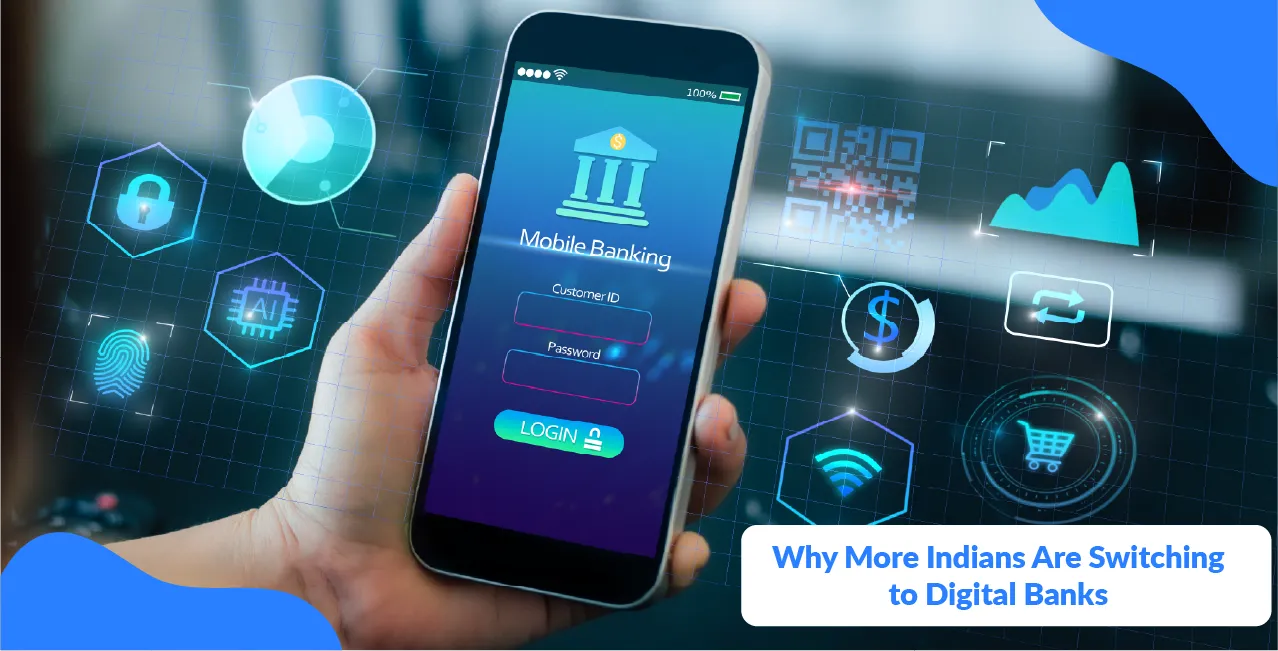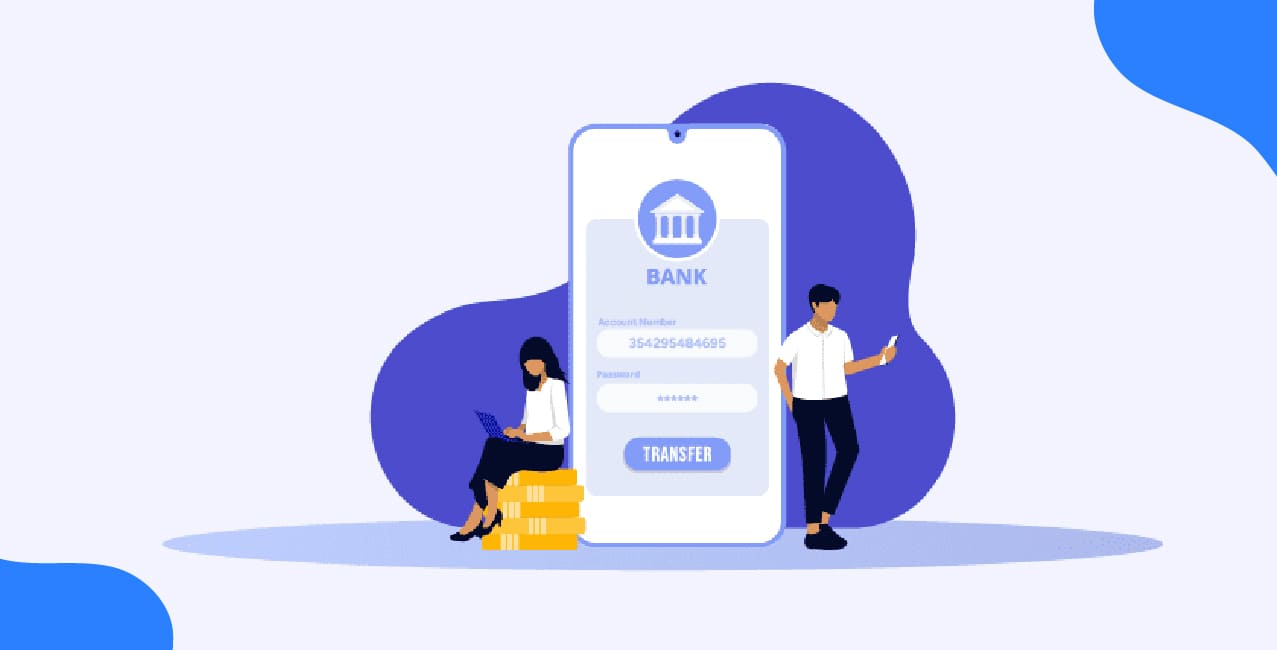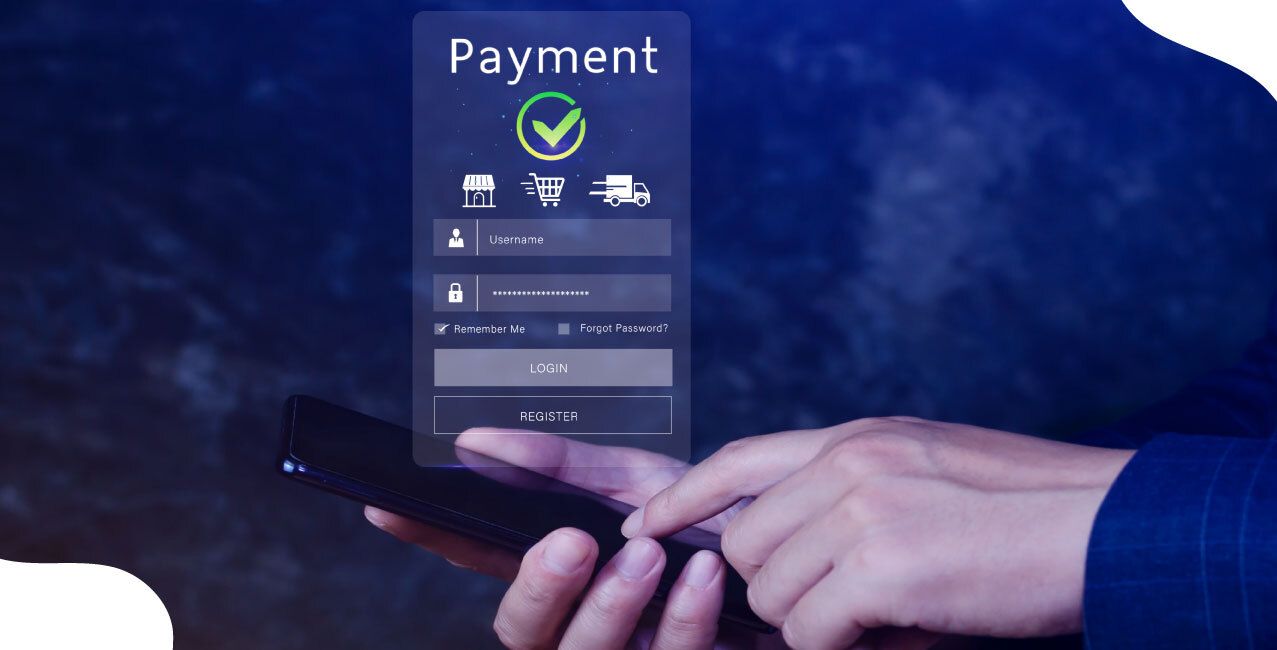
Author
LoansJagat Team
Read Time
5 Min
11 Jul 2025
Why More Indians Are Switching to Digital Banks – The 2025 Trend
Indians now prefer banking on their phones rather than visiting branches. Digital banks save money, offer better rates, and work faster than old banks. Let's explore why this trend is growing rapidly in this blog.
1. Exponential Growth in Digital Payment Adoption
The digital payments market is valued at $3 trillion in 2024 and projected to hit $10 trillion by 2026, with 65% of all payments becoming cashless.
Indians embrace digital banking because mobile applications offer unmatched convenience for daily transactions. Traditional banks require physical visits for basic services, while digital banks operate around the clock.
Young professionals particularly favour these platforms because they save valuable time. Digital banks process loan applications within hours instead of weeks. UPI integration allows seamless money transfers between different bank accounts instantly.
Digital vs Traditional Banking Cost Comparison:
2. Superior User Experience and Accessibility
A significant majority of consumers (78%) prefer to manage their bank accounts through mobile apps or computers rather than visiting branches.
Digital banks design their interfaces with customer satisfaction as the primary focus. Users complete account opening procedures within ten minutes using only their mobile phones. Biometric authentication eliminates password-related security concerns while ensuring quick access. Advanced chatbots provide instant customer support in multiple regional languages.
Rural populations gain banking access without travelling long distances to urban centres. Internet connectivity improvements enable farmers and small traders to participate in the digital economy actively. Educational content within applications teaches financial literacy to first-time banking users.
Digital Banking User Experience Metrics:
3. Enhanced Security Features and Trust Building
UPI processes over 25% of India's retail digital payments, registering over 14 billion transactions monthly with complete interoperability.
Modern digital banks implement advanced encryption technologies that surpass traditional banking security measures. Multi-factor authentication includes fingerprint scanning, facial recognition, and OTP verification simultaneously.
Real-time fraud detection systems monitor suspicious activities and block unauthorised transactions automatically. Users receive instant notifications for every account activity, enabling immediate response to security threats.
Regulatory compliance ensures customer deposits remain protected under government insurance schemes. Reserve Bank of India oversight maintains strict operational standards for digital banking platforms. Blockchain technology integration provides transparent transaction records that prevent data manipulation.
Security Comparison Analysis:
4. Competitive Interest Rates and Financial Products
India's digital banking market, valued at USD 341.5 million in 2024, is projected to reach USD 936.2 million by 2033, growing at a 3.8% CAGR.
Digital banks attract customers with significantly higher interest rates on savings accounts and fixed deposits. Lower operational costs enable them to share profits with account holders through better returns. Personal loan processing becomes faster with artificial intelligence-based credit scoring systems.
Micro-lending services cater to small business needs effectively. Credit card approvals happen within hours instead of weeks. Insurance products are bundled with banking services at competitive premiums. Mutual fund investments start with minimal amounts, making wealth creation accessible to middle-class families.
Interest Rate and Product Comparison:
5. Government Support and Digital Infrastructure Development
The Digital Banks market in India is projected to grow by 5.36% annually from 2024 to 2029, reaching a market volume of US$30.91 billion by 2029.
Government initiatives, such as Digital India and the JAM Trinity (Jan Dhan-Aadhaar-Mobile), create strong foundations for digital banking expansion. UPI infrastructure enables easy connection between different financial institutions seamlessly.
Financial inclusion programmes target unbanked populations in remote areas effectively. Direct benefit transfers through digital channels reduce corruption and improve efficiency. Startup India policies encourage fintech innovation with tax benefits and simplified regulations.
5G network rollout enhances mobile banking speeds significantly. Digital literacy campaigns educate citizens about online financial services. Public-private partnerships develop payment infrastructure in tier-2 and tier-3 cities systematically.
Digital Infrastructure Growth Impact:
Conclusion
Digital banks offer Indians better rates, lower costs, and faster service than traditional banks. More people choose digital banking because it saves money and time while providing excellent security and convenience.
FAQs
1. Are digital banks safe in India?
Yes, digital banks use advanced security, and government regulations protect your money.
2. Do digital banks charge fees?
Most digital banks offer free services, while traditional banks charge high fees.
3. Can I get loans from digital banks?
Yes, digital banks approve personal loans faster than traditional banks.
4. Do I need internet for digital banking?
Yes, you need an internet connection to use digital banking services on your phone.
About the Author

LoansJagat Team
‘Simplify Finance for Everyone.’ This is the common goal of our team, as we try to explain any topic with relatable examples. From personal to business finance, managing EMIs to becoming debt-free, we do extensive research on each and every parameter, so you don’t have to. Scroll up and have a look at what 15+ years of experience in the BFSI sector looks like.

Quick Apply Loan
Subscribe Now
Related Blog Post


